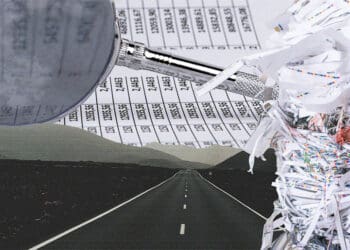“Never let the facts get in the way of a good argument.”
Facts – or, more precisely, our understanding of facts or the truth – have become more transient in the information age. Or have they? The internet has radically changed how we access information in ways that few appear to challenge or even understand. Today, anyone can Google a fact or story or news event about any topic imaginable to “learn” about a topic instantly with only a few keystrokes. We are bombarded with opinion pieces, rumors, false news stories and innuendos without bothering to check the validity of the stories. In fact, depending on the viewer of said data, the facts are easily dismissed when the information disagrees with one’s views or beliefs about the topic. So the question here is: has the information age inhibited critical thinking? Risk managers are not immune to these same biases, and the implications may help explain why risk management is at risk of failing.
It turns out that the definition of the “truth” does not answer the question of what a truth really is. Here are a few examples: Merriam-Webster states that truth is “sincerity in action, character and utterance,” “the state of being the case: a fact,” “the body of real things, events and facts,” “a transcendent fundamental or spiritual reality,” and “a judgment, proposition or idea that is true or accepted as true.” Or my favorite, “the body of true statements and propositions.” Dictionary.com has 10 different definitions, each in contrast with Merriam-Webster. In other words, truth is what we believe it is. You know you are in trouble when truth and transcendental or spiritual reality are used in the same definition. Apparently, we have no idea what a truth is, or we are simply more confused than ever as we get bombarded with different truths.
But why is this important for risk professionals? If the truth changes based on evolving norms, opinions, perception and biases, how does a risk professional manage emerging risks in an environment where a variance from the old truths conflict with new truths? Operating models change as new leadership dictates views on old operating models, requiring risk professionals to ask: how does one assess these new risks? What was once indisputable no longer applies (or does it?), and old assumptions are considered impediments to progress.
In the age of Big Data, corporations are in search of the truth in customer behavior, buying preferences and managing the risk of strategic plans. However, even with the assistance of advanced analytics, we are more “archaeologists” than true scientists. Archaeologists apply a body of knowledge and a great deal of conjecture in constructing their view of the past. Each new discovery has the potential to disrupt or partially validate assumptions in our belief about what ancient civilizations or animals were really like. We don’t have enough information to confirm these conjectures, but instead believe them in the absence of data that fails to contradict them. This is the crude method in how humans learn – through trial and error. If something is proven to work reasonably well over time, it becomes the truth. If it is fails miserably, it is considered to not be the truth. But we know from scientific experiments that truth can be derived from failures, even massive failures like a space shuttle catastrophe or major battles in war. We “learn” from mistakes and vow to never repeat them again.
The truth is, we seldom if ever have perfect information. Imperfect information is uncertainty, NOT a risk. Risk is a known quantity. It can be measured and we know to avoid it or accept it, and that is why we call it a risk. The failure in risk management is not knowing the difference. Fear, confusion and hope are signs of uncertainty and are emotional signals that we have crossed the Rubicon of not knowing whether the outcomes will result in losses or gains. This is when risk managers become archaeologists. Archaeological risk managers try to develop stories from past experience and imperfect information to describe the new truths using old methods. This happens in every industry, from insurance to financial services and beyond, and partly explains why we miss really big emerging risks until a “learning” experience teaches us what a risk really looks like.
Fear, confusion and hope are natural responses in our primitive brain of fight-or-flight mechanisms of survival. These emotional responses are also signals that we must tread lightly, gather information gradually and take measured risks without betting the farm on a new shiny thing that may be a train coming through the tunnel of darkness.
How can risk professionals avoid the freight train? Don’t be afraid to say you don’t know. When worry, fear and confusion permeates communications, that is a signal a freight train may be barreling down the tracks. Instead, you must use this time to understand what you know and separate that from what you don’t know. Understanding the difference is critical, because it provides risk managers with direction to gather information and perform advanced assessments and provides definable boundaries where risks may be lurking. It is also important to understand that huge potential is the other side of uncertainty. Big rewards can be found when uncertainty is at its highest level; however, risk professionals must have a measured approach to understanding the upside of uncertainty.
This is not the time to follow the crowd.
The upside of uncertainty requires risk managers to seek opportunity where others are fleeing or cannot see how the change in the new rules may benefit organizations poised to leverage change. What risk professionals must avoid during uncertainty is becoming archaeologists. Old methods may help to tell a compelling story, but the real risks and upside to uncertainty will be lost as the new rules obscure what the truth really is.



 James Bone’s career has spanned 29 years of management, financial services and regulatory compliance risk experience with Frito-Lay, Inc., Abbot Labs, Merrill Lynch, and Fidelity Investments. James founded Global Compliance Associates, LLC and TheGRCBlueBook in 2009 to consult with global professional services firms, private equity investors, and risk and compliance professionals seeking insights in governance, risk and compliance (“GRC”) leading practices and best in class vendors.
James Bone’s career has spanned 29 years of management, financial services and regulatory compliance risk experience with Frito-Lay, Inc., Abbot Labs, Merrill Lynch, and Fidelity Investments. James founded Global Compliance Associates, LLC and TheGRCBlueBook in 2009 to consult with global professional services firms, private equity investors, and risk and compliance professionals seeking insights in governance, risk and compliance (“GRC”) leading practices and best in class vendors.










